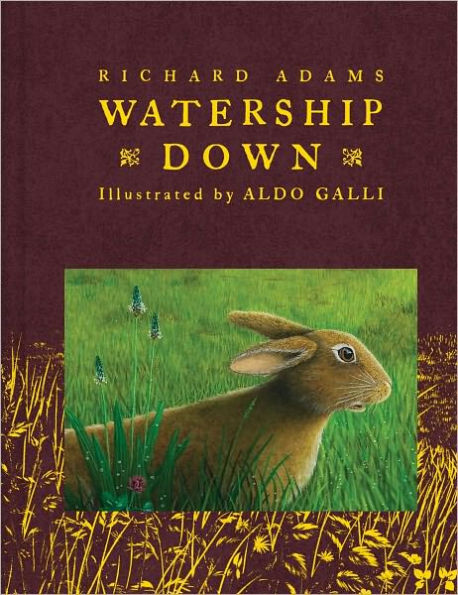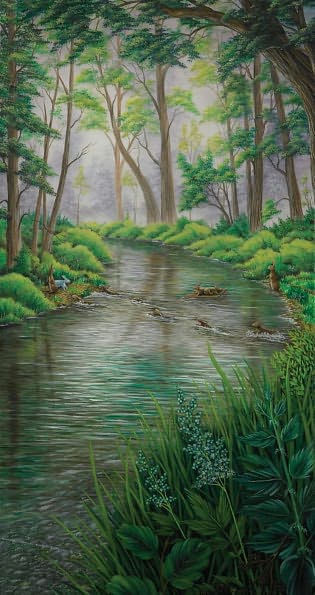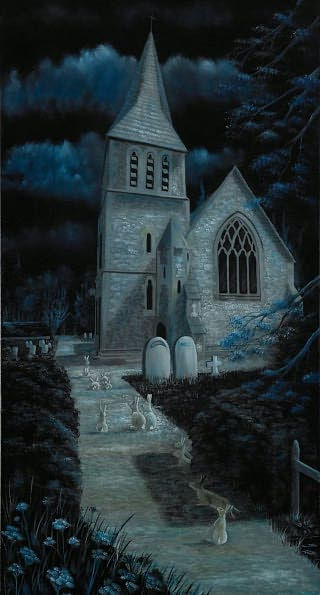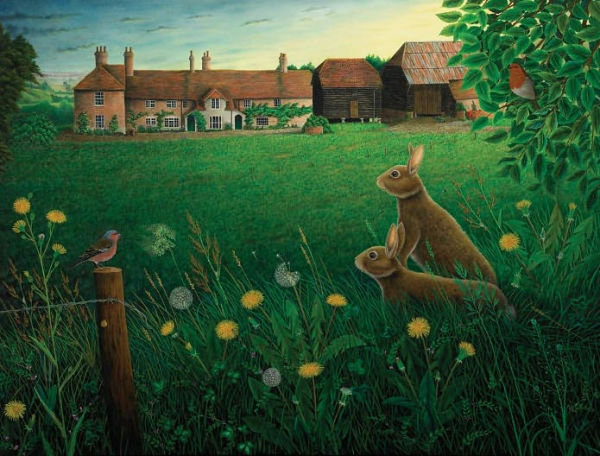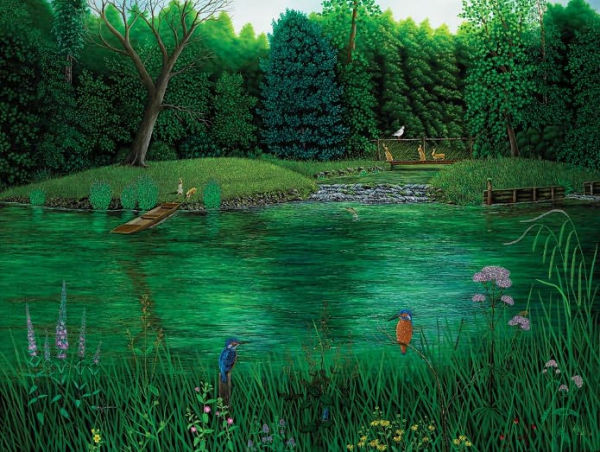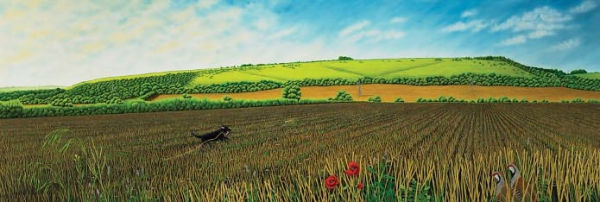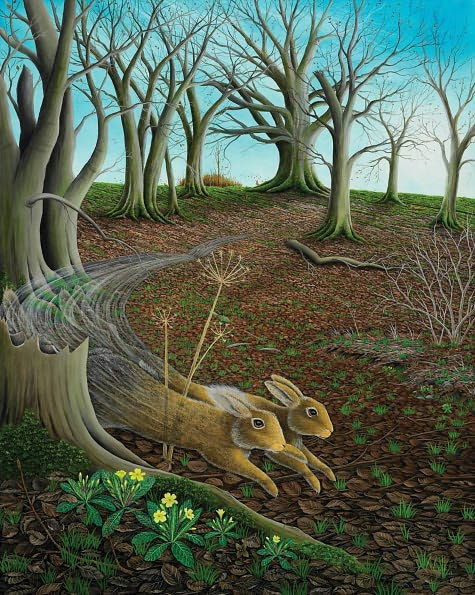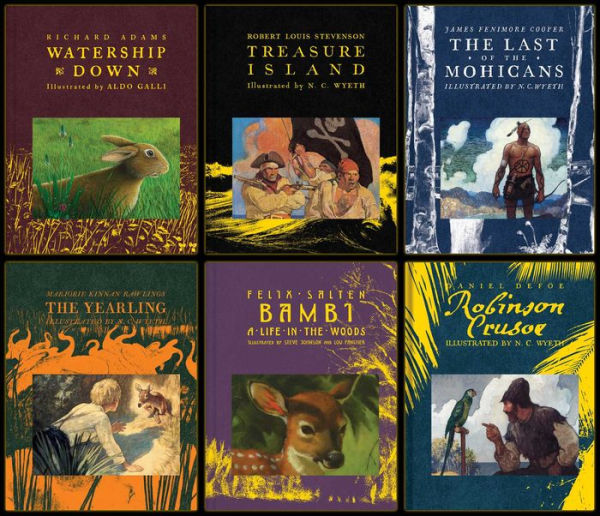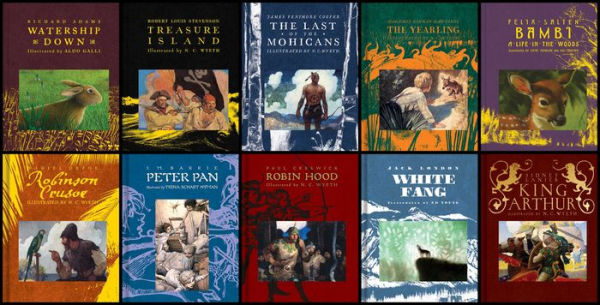CHORUS:Why do you cry out thus, unless at some vision of horror?
CASSANDRA:
The house reeks of death and dripping blood.
CHORUS:
How so? ’Tis but the odor of the altar sacrifice.
CASSANDRA:
The stench is like a breath from the tomb.
Aeschylus, Agamemnon
The primroses were over. Toward the edge of the wood, where the ground became open and sloped down to an old fence and a brambly ditch beyond, only a few fading patches of pale yellow still showed among the dog’s mercury and oak-tree roots. On the other side of the fence, the upper part of the field was full of rabbit holes. In places the grass was gone altogether and everywhere there were clusters of dry droppings, through which nothing but the ragwort would grow. A hundred yards away, at the bottom of the slope, ran the brook, no more than three feet wide, half choked with kingcups, watercress and blue brooklime. The cart track crossed by a brick culvert and climbed the opposite slope to a five-barred gate in the thorn hedge. The gate led into the lane.
The May sunset was red in clouds, and there was still half an hour to twilight. The dry slope was dotted with rabbits—some nibbling at the thin grass near their holes, others pushing further down to look for dandelions or perhaps a cowslip that the rest had missed. Here and there one sat upright on an ant heap and looked about, with ears erect and nose in the wind. But a blackbird, singing undisturbed on the outskirts of the wood, showed that there was nothing alarming there, and in the other direction, along the brook, all was plain to be seen, empty and quiet. The warren was at peace.
At the top of the bank, close to the wild cherry where the blackbird sang, was a little group of holes almost hidden by brambles. In the green half-light, at the mouth of one of these holes, two rabbits were sitting together side by side. At length, the larger of the two came out, slipped along the bank under cover of the brambles and so down into the ditch and up into the field. A few moments later the other followed.
The first rabbit stopped in a sunny patch and scratched his ear with rapid movements of his hind leg. Although he was a yearling and still below full weight, he had not the harassed look of most “outskirters”—that is, the rank and file of ordinary rabbits in their first year who, lacking either aristocratic parentage or unusual size and strength, get sat on by their elders and live as best they can—often in the open—on the edge of their warren. He looked as though he knew how to take care of himself. There was a shrewd, buoyant air about him as he sat up, looked round and rubbed both front paws over his nose. As soon as he was satisfied that all was well, he laid back his ears and set to work on the grass.
His companion seemed less at ease. He was small, with wide, staring eyes and a way of raising and turning his head which suggested not so much caution as a kind of ceaseless, nervous tension. His nose moved continually, and when a bumblebee flew humming to a thistle bloom behind him, he jumped and spun round with a start that sent two nearby rabbits scurrying for holes before the nearest, a buck with black-tipped ears, recognized him and returned to feeding.
“Oh, it’s only Fiver,” said the black-tipped rabbit, “jumping at bluebottles again. Come on, Buckthorn, what were you telling me?”
“Fiver?” said the other rabbit. “Why’s he called that?”
“Five in the litter, you know: he was the last—and the smallest. You’d wonder nothing had got him by now. I always say a man couldn’t see him and a fox wouldn’t want him. Still, I admit he seems to be able to keep out of harm’s way.”*
The small rabbit came closer to his companion, lolloping on long hind legs.
“Let’s go a bit further, Hazel,” he said. “You know, there’s something queer about the warren this evening, although I can’t tell exactly what it is. Shall we go down to the brook?”
“All right,” answered Hazel, “and you can find me a cowslip. If you can’t find one, no one can.”
He led the way down the slope, his shadow stretching behind him on the grass. They reached the brook and began nibbling and searching close beside the wheel ruts of the track.
It was not long before Fiver found what they were looking for. Cowslips are a delicacy among rabbits, and as a rule there are very few left by late May in the neighborhood of even a small warren. This one had not bloomed and its flat spread of leaves was almost hidden under the long grass. They were just starting on it when two larger rabbits came running across from the other side of the nearby cattle wade.
“Cowslip?” said one. “All right—just leave it to us. Come on, hurry up,” he added, as Fiver hesitated. “You heard me, didn’t you?”
“Fiver found it, Toadflax,” said Hazel.
“And we’ll eat it,” replied Toadflax. “Cowslips are for Owsla*—don’t you know that? If you don’t, we can easily teach you.”
Fiver had already turned away. Hazel caught him up by the culvert.
“I’m sick and tired of it,” he said. “It’s the same all the time. ‘These are my claws, so this is my cowslip.’ ‘These are my teeth, so this is my burrow.’ I’ll tell you, if ever I get into the Owsla, I’ll treat outskirters with a bit of decency.”
“Well, you can at least expect to be in the Owsla one day,” answered Fiver. “You’ve got some weight coming and that’s more than I shall ever have.”
“You don’t suppose I’ll leave you to look after yourself, do you?” said Hazel. “But to tell you the truth, I sometimes feel like clearing out of this warren altogether. Still, let’s forget it now and try to enjoy the evening. I tell you what—shall we go across the brook? There’ll be fewer rabbits and we can have a bit of peace. Unless you feel it isn’t safe?” he added.
The way in which he asked suggested that he did in fact think that Fiver was likely to know better than himself, and it was clear from Fiver’s reply that this was accepted between them.
“No, it’s safe enough,” he answered. “If I start feeling there’s anything dangerous I’ll tell you. But it’s not exactly danger that I seem to feel about the place. It’s—oh, I don’t know—something oppressive, like thunder: I can’t tell what; but it worries me. All the same, I’ll come across with you.”
They ran over the culvert. The grass was wet and thick near the stream and they made their way up the opposite slope, looking for drier ground. Part of the slope was in shadow, for the sun was sinking ahead of them, and Hazel, who wanted a warm, sunny spot, went on until they were quite near the lane. As they approached the gate he stopped, staring.
“Fiver, what’s that? Look!”
A little way in front of them, the ground had been freshly disturbed. Two piles of earth lay on the grass. Heavy posts, reeking of creosote and paint, towered up as high as the holly trees in the hedge, and the board they carried threw a long shadow across the top of the field. Near one of the posts, a hammer and a few nails had been left behind.
The two rabbits went up to the board at a hopping run and crouched in a patch of nettles on the far side, wrinkling their noses at the smell of a dead cigarette end somewhere in the grass. Suddenly Fiver shivered and cowered down.
“Oh, Hazel! This is where it comes from! I know now—something very bad! Some terrible thing—coming closer and closer.”
He began to whimper with fear.
“What sort of thing—what do you mean? I thought you said there was no danger?”
“I don’t know what it is,” answered Fiver wretchedly. “There isn’t any danger here, at this moment. But it’s coming—it’s coming. Oh, Hazel, look! The field! It’s covered with blood!”
“Don’t be silly, it’s only the light of the sunset. Fiver, come on, don’t talk like this, you’re frightening me!”
Fiver sat trembling and crying among the nettles as Hazel tried to reassure him and to find out what it could be that had suddenly driven him beside himself. If he was terrified, why did he not run for safety, as any sensible rabbit would? But Fiver could not explain and only grew more and more distressed. At last Hazel said,
“Fiver, you can’t sit crying here. Anyway, it’s getting dark. We’d better go back to the burrow.”
“Back to the burrow?” whimpered Fiver. “It’ll come there—don’t think it won’t! I tell you, the field’s full of blood—”
“Now stop it,” said Hazel firmly. “Just let me look after you for a bit. Whatever the trouble is, it’s time we got back.”
He ran down the field and over the brook to the cattle wade. Here there was a delay, for Fiver—surrounded on all sides by the quiet summer evening—became helpless and almost paralyzed with fear. When at last Hazel had got him back to the ditch, he refused at first to go underground and Hazel had almost to push him down the hole.
The sun set behind the opposite slope. The wind turned colder, with a scatter of rain, and in less than an hour it was dark. All color had faded from the sky: and although the big board by the gate creaked slightly in the night wind (as though to insist that it had not disappeared in the darkness, but was still firmly where it had been put), there was no passer-by to read the sharp, hard letters that cut straight as black knives across its white surface. They said:
THIS IDEALLY SITUATED ESTATE, COMPRISING SIX ACRES OF EXCELLENT BUILDING LAND, IS TO BE DEVELOPED WITH HIGH CLASS MODERN RESIDENCES BY SUTCH AND MARTIN, LIMITED, OF NEWBURY, BERKS.













